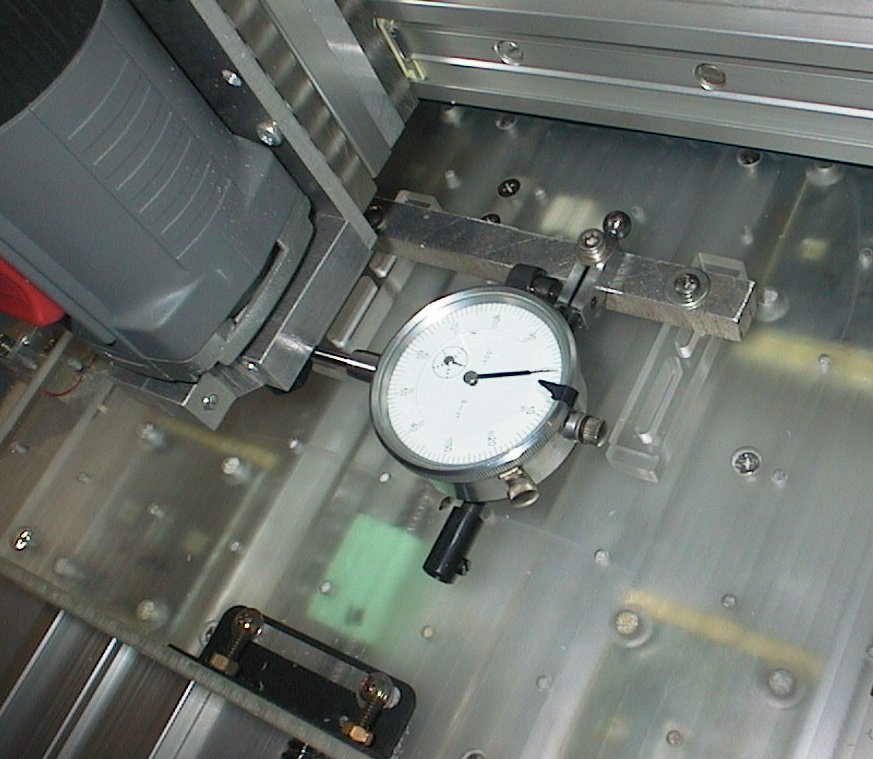The linear rails were bought at sometime during the project, they are anodised alloy rails with polymer bearings. At the time I was expecting to build more of a "engraver" type machine with a small low-force spindle. Now the machine has evolved to become a little more heavy duty... so it will be interesting to see if the lightweight rails will hold up over time.
The table plate is 10mm acrylic, resting on 2 smaller pieces of 10mm acrylic, mounted on the bearing trucks. Care was taken to get everything lined up so there is no binding and it is very square to the gantry etc.
I like acrylic, it's quite hard and drills and takes a tapped thread quite well too. For lightweight machinery I treat it a bit like clear aluminium.It also damps noise a bit (doesn't ring like alloy) and being a bit lighter made it my first choice for the table.
The leadscrews are rolled ballscrews with metric 8mm lead so they give steps in exact stepper format, ie 100 steps = 1 mm. I actually run the steppers with 16th microstepping so the step resolution is 4 times finer than that.
The leadnuts were cast from a special slippery plastic that I work with and know its shrinkage modulus so they shrink during casting to the correct tightness and have no backlash. The end support blocks were cast from the same material.
I broke the rules and used no thrust bearings, the stepper motor bearings are rated at 8kg axial load and are the main thrust bearings. Again time will tell if this is suitable, but since it will mainly be cutting small pieces of plastic at light loads, and infrequent use it might last the distance.
The solid couplings I made from brass on my little 7x20 lathe.






 Reply with Quote
Reply with Quote I've done a ridiculous amount of drilling and tapping on this machine, mostly in 4mm but some 5mm and 6mm too.
I've done a ridiculous amount of drilling and tapping on this machine, mostly in 4mm but some 5mm and 6mm too.



